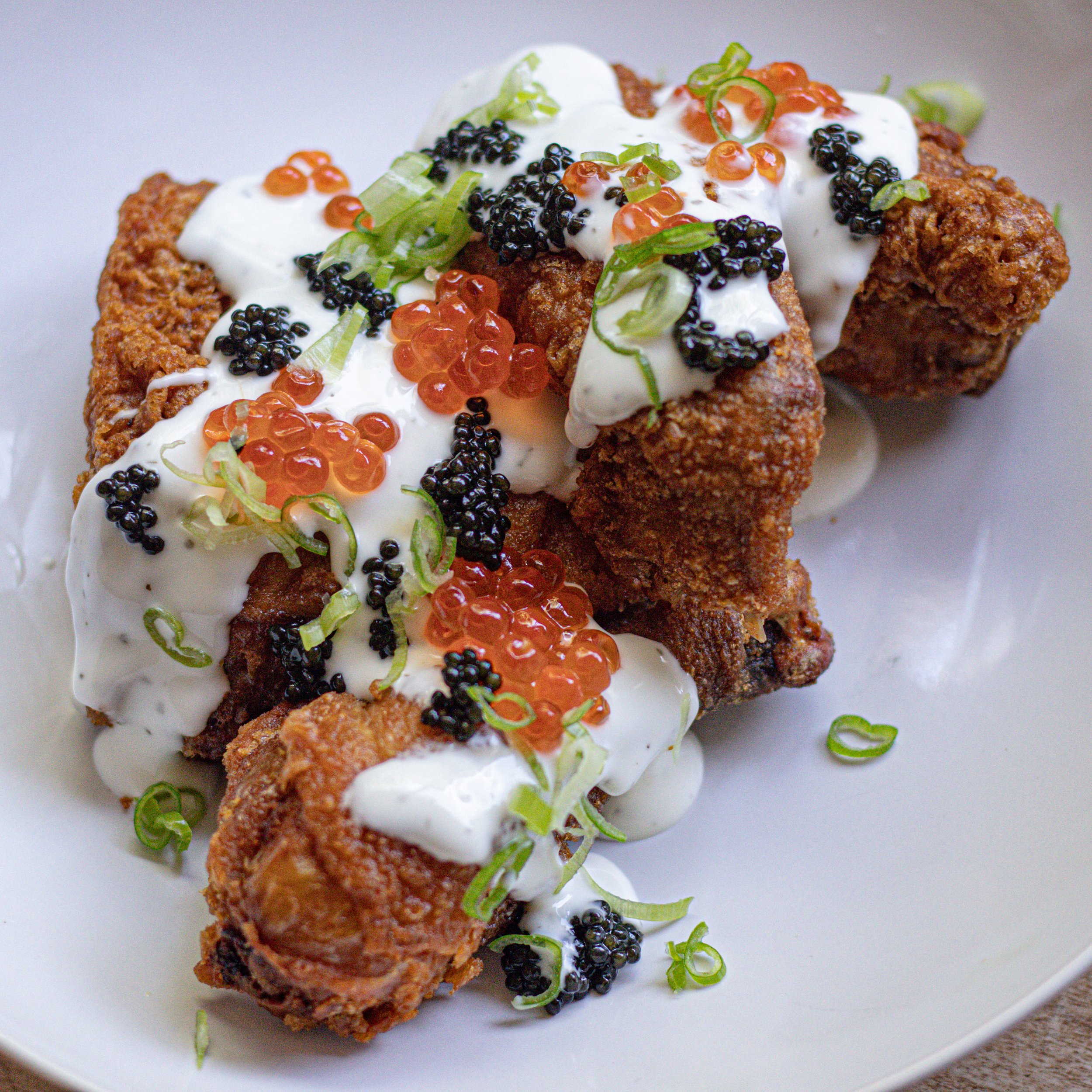

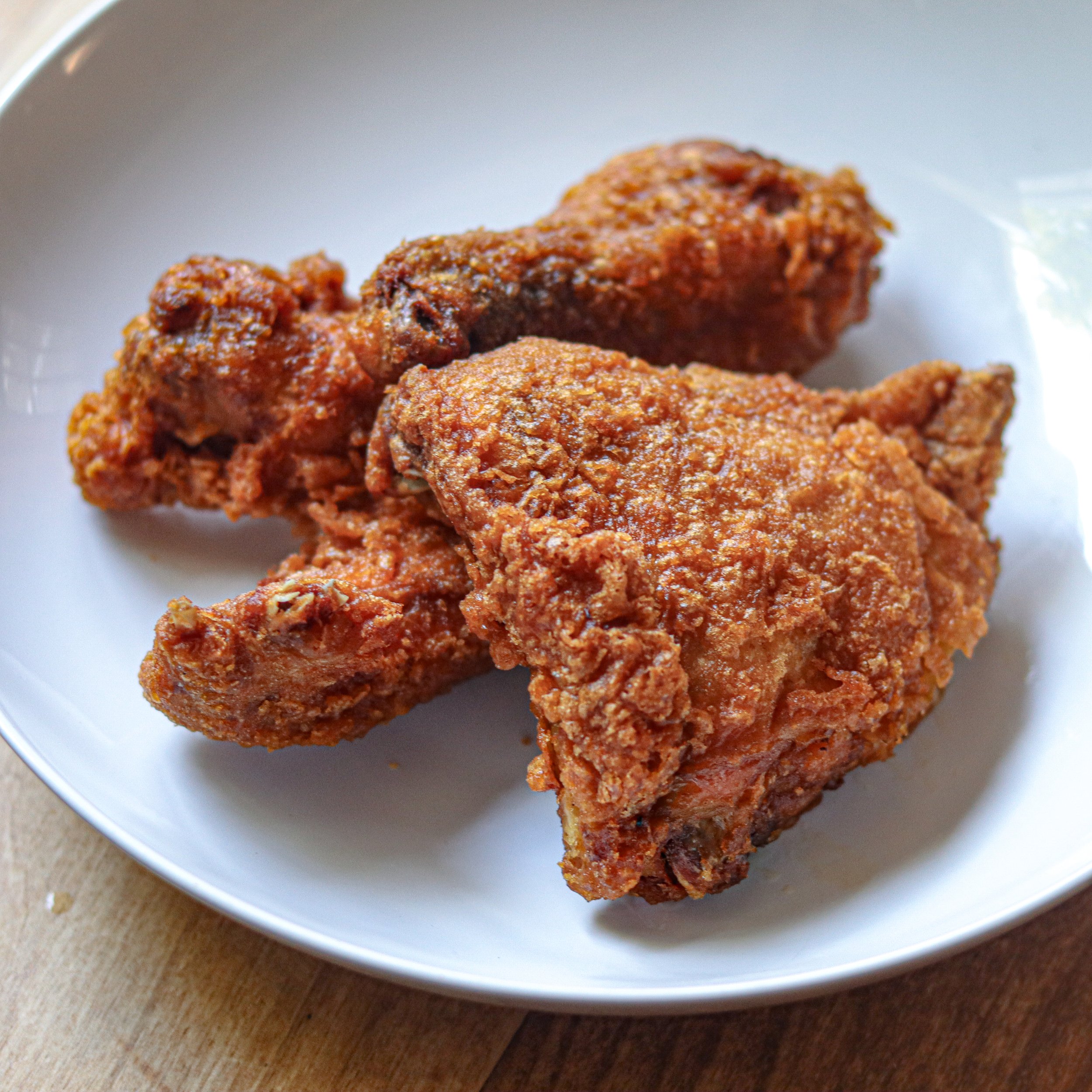
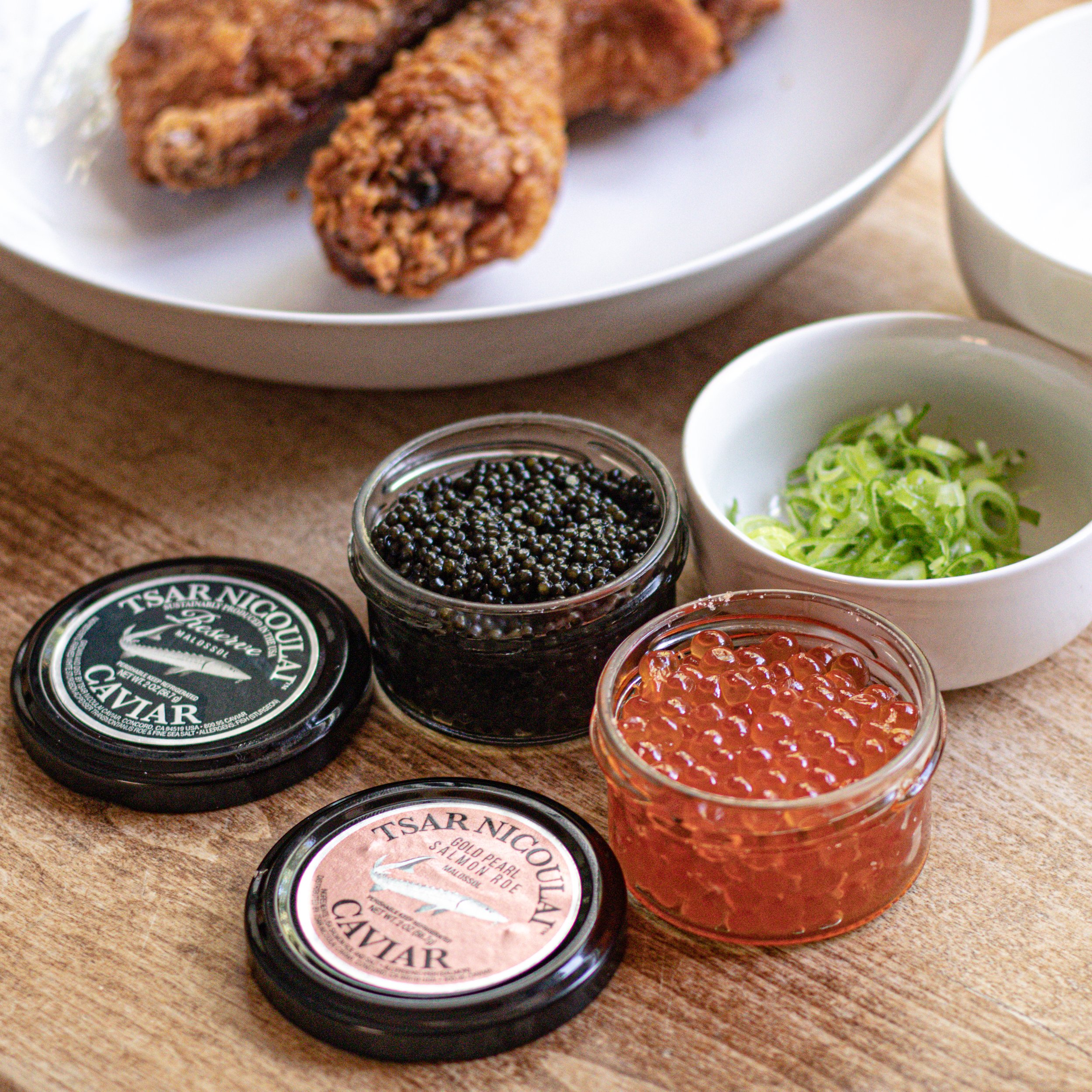

Korean Fried Chicken and Caviar
Ingredients
Instructions
- Place the chicken drumsticks and thighs into a large mixing bowl.
- Season the chicken with salt and black pepper.
- Mix the bowl to thoroughly incorporate the seasoning with the chicken.
- Cover the bowl and store it in the refrigerator for 2 hours.
- In a large mixing bowl, combine the egg, iced water, ap flour, baking soda, potato starch, and salt.
- Use a fork (or whisk) to incorporate the mixture until it becomes a smooth batter.
- Allow the batter to rest for 30 minutes before whisking it again.
- Fill a large cast iron pot with frying oil.
- Heat the oil to 350 F on medium heat.
- Take a chicken [thigh or drumsticks] and fully submerge it into the batter.
- Allow the excess batter to run off. Then gently lay the battered chicken into the frying pot.
- Cook 3-4 pieces at a time.
- Fry the chicken for 10 minutes. Or until the chicken is golden brown and the internal temperature reaches 165 F.
- Remove from the oil and place on paper towels. Let them rest for at least 10 minutes before serving.
- Assemble the fried chicken in a latter shallow bowl (or platter).
- Dollop ranch on all the fried chicken pieces.
- Dollop caviar and salmon roe on the fried chicken as well.
- Garnish the chicken with sliced scallions (optional)
Notes
—About Tsar Nicoulai Caviar—
For over 30 years, Tsar Nicoulai Caviar has sustainably cultivated world-renowned caviar from 100% American White Sturgeon. And is the first caviar farm in the world to produce food in an aquaponics system, which is a complete ecosystem that includes growing fish, plants, and bacteria. Not only is their caviar sustainable but their farm is a zero-waste facility.










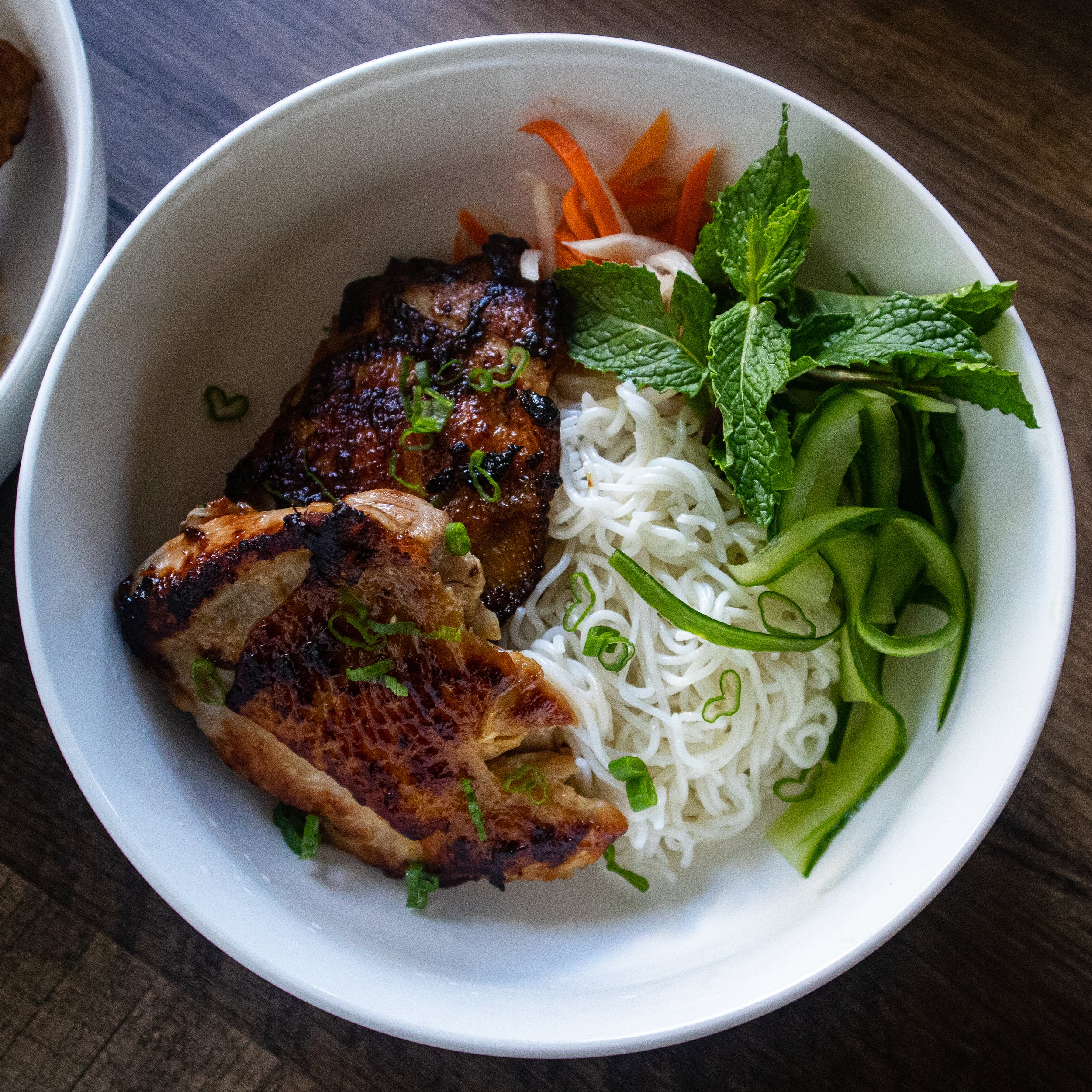



















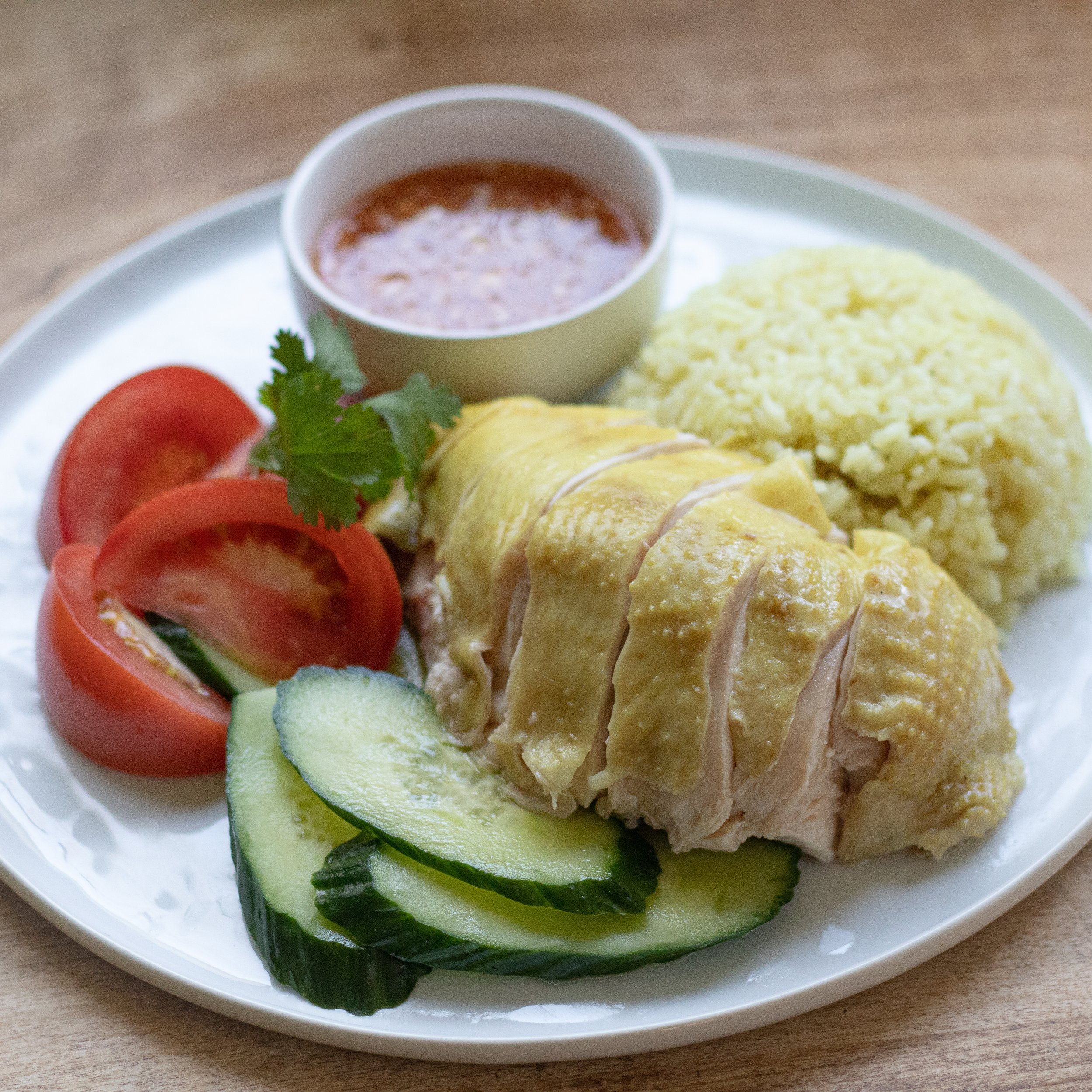








![Goi Ga [desktop].jpg](https://images.squarespace-cdn.com/content/v1/56cf7cfb0442626af6cd8f70/1623256199397-ZB7LF5ZR5O498LSGI65F/Goi+Ga+%5Bdesktop%5D.jpg)


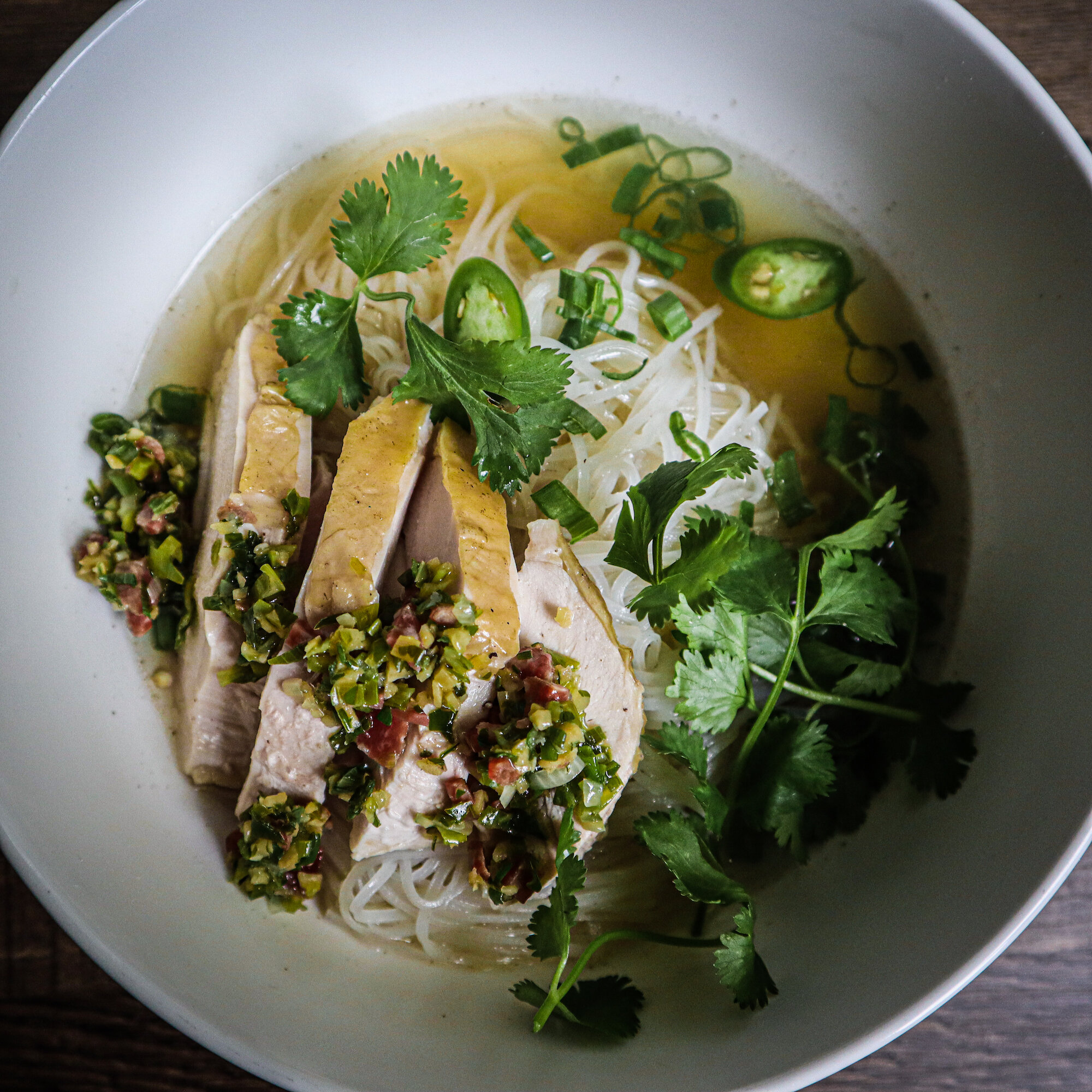




![Phở Gà [Chicken Pho] Phở Gà [Chicken Pho]](https://i.imgur.com/apv56Hm.jpg)


